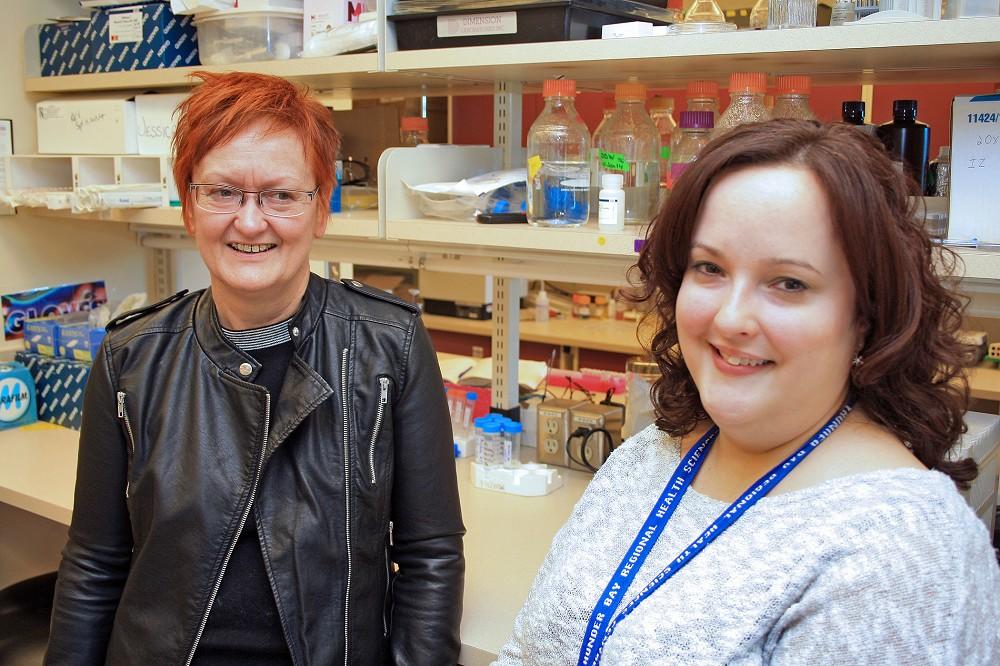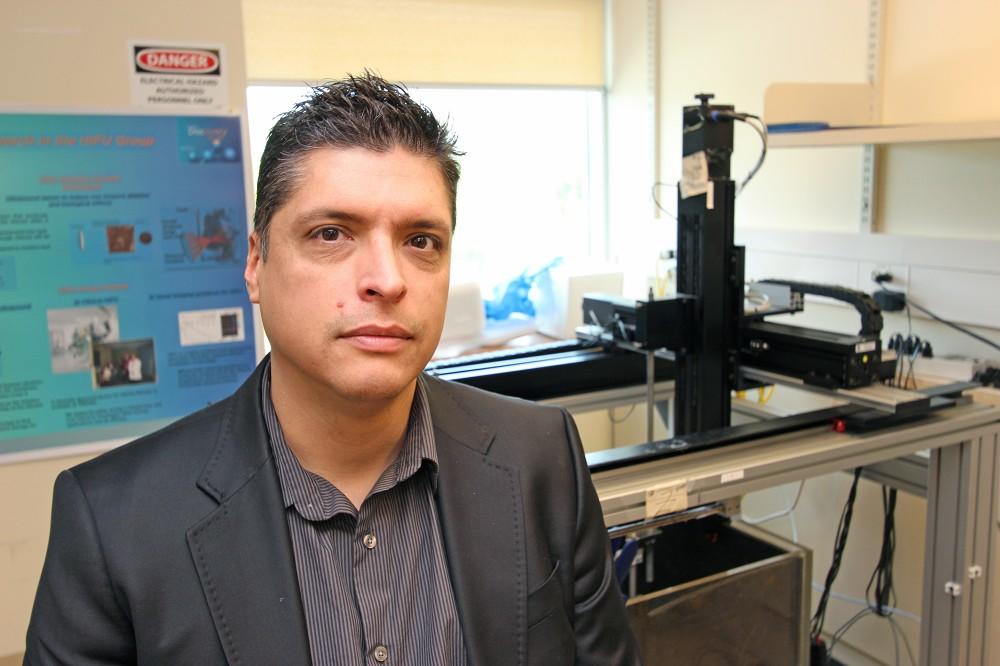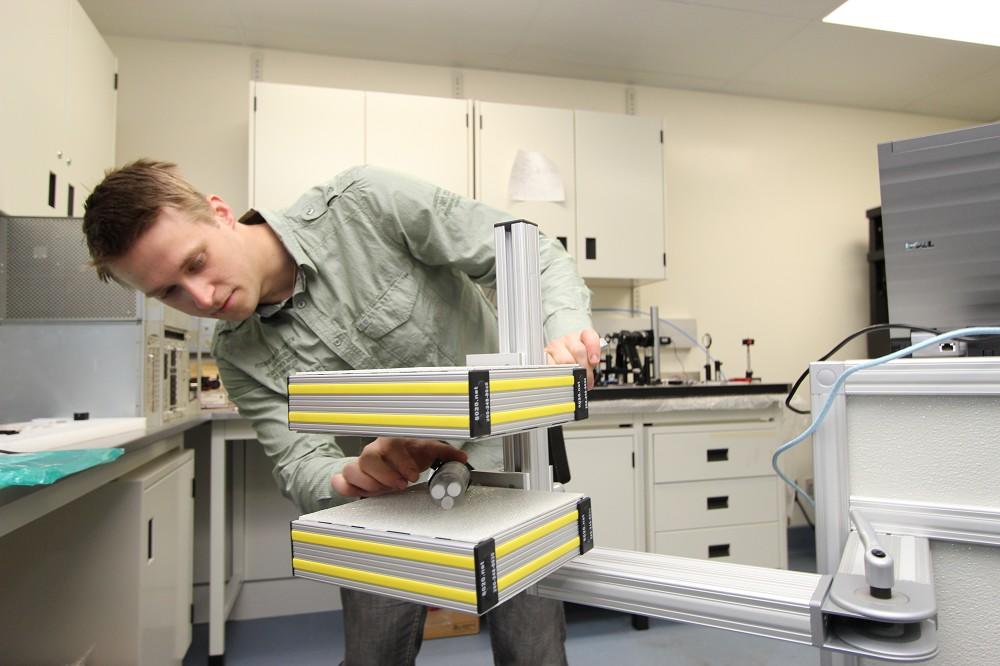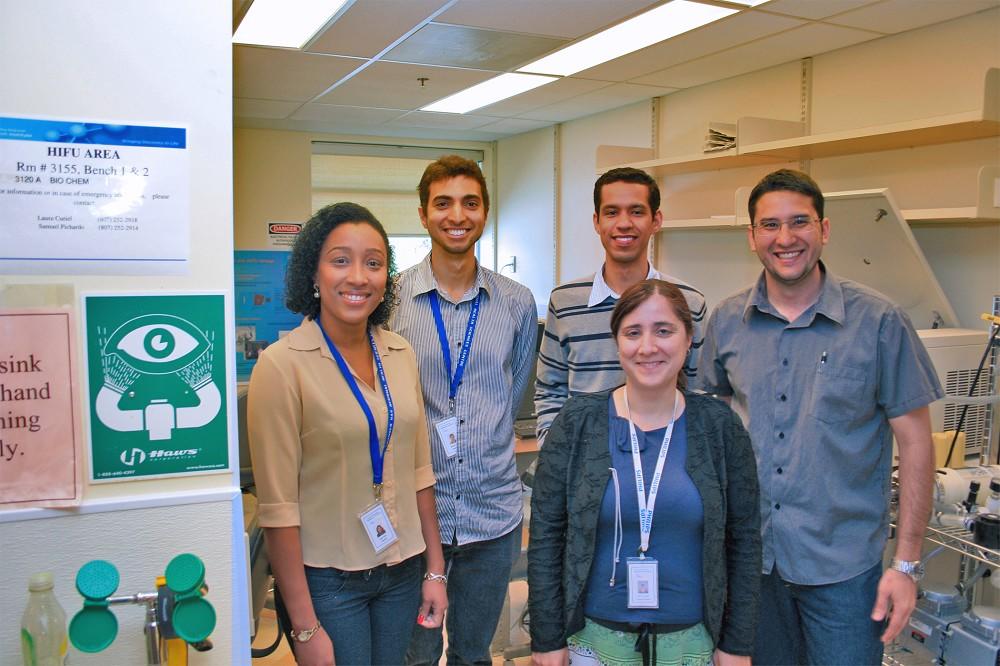Exciting Research Happening at TBRRI
by Communications
 Dr. Ingeborg Zehbe and her PhD student Melissa Togtema are developing two new cervical cancer treatments.
Dr. Ingeborg Zehbe and her PhD student Melissa Togtema are developing two new cervical cancer treatments. New Cervical Cancer Treatments in Development
Dr. Ingeborg Zehbe and her PhD student Melissa Togtema are developing two new cervical cancer treatments. One attacks a cancer-causing protein found in HPV – which would make it the first antibody therapy in the world for cervical cancer – while the other prevents the cancer-causing protein from being made in host cells. Both approaches are designed to target cancer cells directly while leaving healthy cells intact. These innovative and personalized cancer therapies would be less invasive and harmful than surgery or chemotherapy, and may also be used to treat or diagnose other HPV-related cancers. Clinical trials could begin in as few as five years.
 Dr. Samuel Pichardo.
Dr. Samuel Pichardo.
Collaboration with SickKids to Treat Neuroblastoma with HIFU
Dr. Samuel Pichardo is collaborating with Dr. Ted Gerstle, chief of oncology surgery at SickKids, to adapt magnetic resonance-guided high-intensity focused ultrasound (MRgHIFU) to remove neuroblastoma tumours that occur in the kidney. The project, a preclinical validation funded by Solving Kids’ Cancer, investigates this method as a non-invasive alternative to surgery, chemotherapy, and other difficult treatments. Dr. Pichardo is co-supervising students and staff to adapt techniques previously developed to treat head and neck tumours. A separate imaging-only clinical trial to test several monitoring techniques is in the planning stages, and will take place in Thunder Bay.
 Dr. Alla Reznik and her team continue research into a mammography alternative that will be more effective for women with high-density breast tissue.
Dr. Alla Reznik and her team continue research into a mammography alternative that will be more effective for women with high-density breast tissue.
Alternative Mammography “Sees Through” Denser Tissue
Dr. Alla Reznik and her team continue research into a mammography alternative that will be more effective for women with high-density breast tissue. Using traditional mammography, tumours can “hide” in the scan because dense tissue and tumours both appear white. Positron-emission mammography (PEM) is a molecular imaging method that uses a radioactive glucose tracer. The tumour absorbs this tracer, clearly identifying tumours regardless of breast density. It is also more portable than traditional mammography and does not require breast compression, making it a painless alternative. A prototype is in development and clinical trials are planned for 2016.
 Dr. Laura Curiel mentored four students from Brazil who helped with various HIFU projects.
Dr. Laura Curiel mentored four students from Brazil who helped with various HIFU projects.
Brazil’s Best and Brightest Working on TBRRI HIFU Projects
In the summer of 2014, Dr. Laura Curiel mentored four students from Brazil who helped with various HIFU projects. These included testing a new imaging agent for prostate cancer biomarkers made of nanoparticles, calibrating a HIFU targeting system that will be able to work within the MRI’s magnetic field, and developing electronics hardware that will allow the HIFU’s transducers to use less energy. The students were attracted to Lakehead University and saw the opportunity to work in a highly reputable research lab as an added bonus, underlining the benefits of our partnerships.
You can support research at the TBRRI through the Health Sciences Discovery Fund!
Click here to donate.